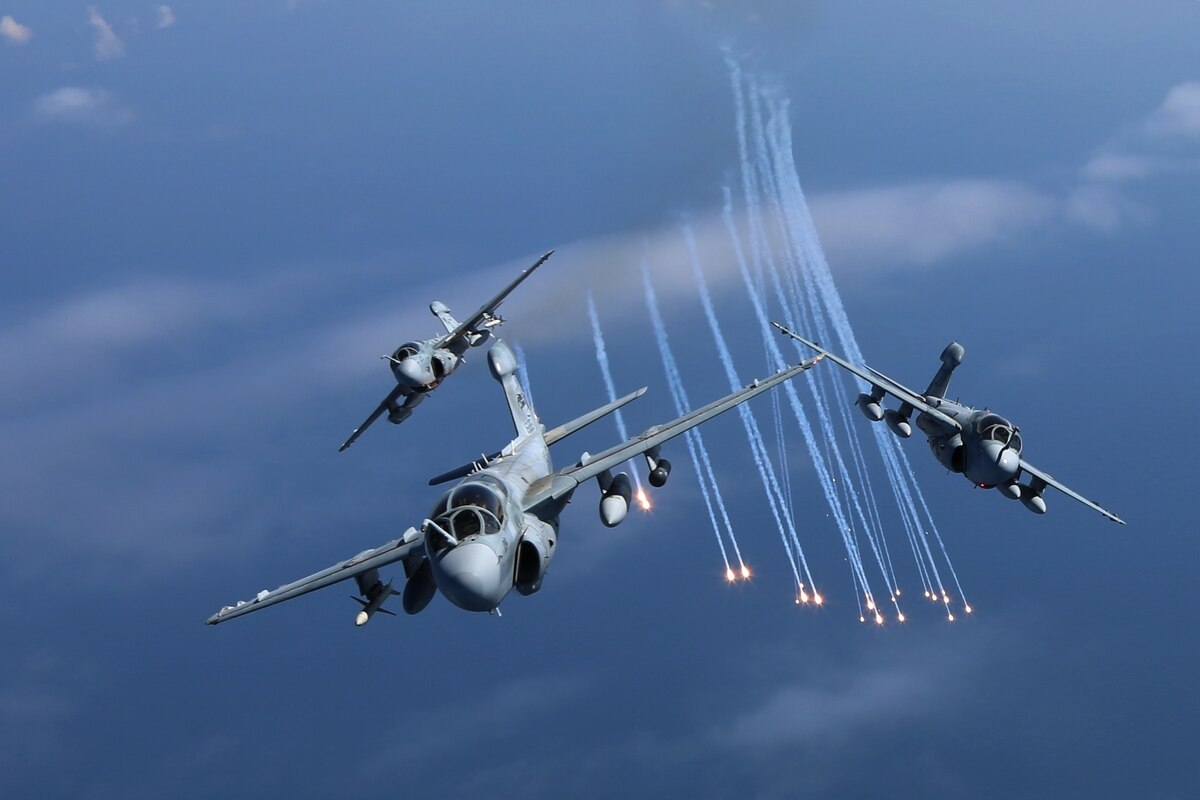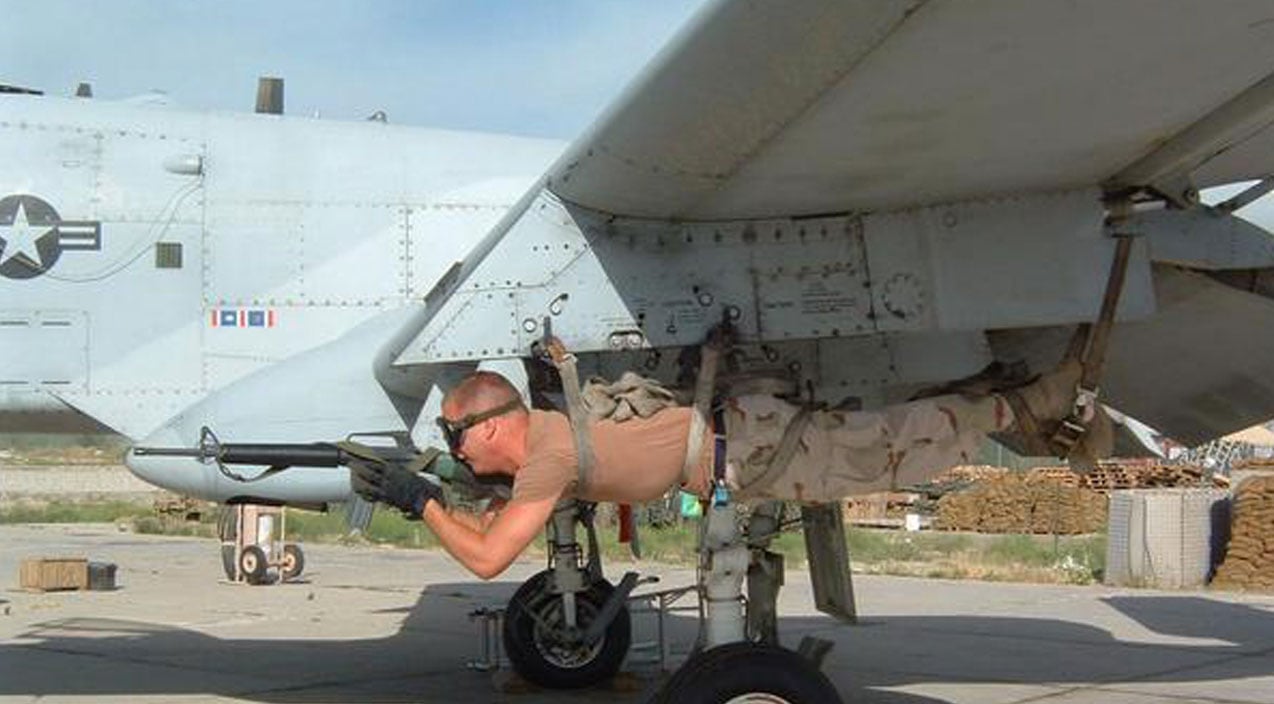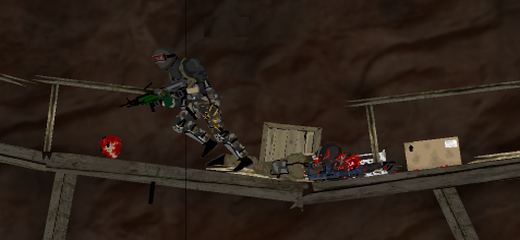

USAF A-10A showing kill markings from Operation Desert Storm, 1991 (USAF) Related: DOGFIGHTING AT 9GS: LIKE AIMING ‘THROUGH A TOILET PAPER ROLL’ “Then they want to bug out, light the afterburner and get away - but all that does is make my AIM-9 lock-on alarm scream louder!” “If they get into the turning fight with us they deplete a lot of energy,” explained Yount. The problem is, if you turn and run, you’re flying right into the heat-seeking Sidewinder’s trap. If an enemy jet finds itself in close quarters with an A-10, its left to choose between two difficult options: You can try to out-turn the A-10 and fire your weapons before it can, or you can turn tail and run from the BRRRT. The combination of the A-10’s tight turn radius and AIM-9s makes for a frightening one-two punch for aggressive enemy fighters.

AIM-9s are infrared-guided weapons with a range of 22 miles, giving the Warthog the punch it needs to engage an enemy fighter at a distance. In case of a dogfight, the A-10 also carries a pair of AIM-9M sidewinder missiles.
#A10 intruder combat training how to
A-10 pilots learn how to leverage the plane’s unique skills in a dogfightĪs powerful as the GAU-8 is, the Warthog has other tools to help it win a fight with an opposing jet. It simply wasn’t built for it… but with America pivoting back toward great power competition and the A-10 slated to remain in service until the 2040s, this CAS champ is once again facing the possibility of having to square off with jets that were built specifically to hunt down and kill planes that can move a lot quicker than the Warthog does. Pilots from other aircraft can be even crueler, often kidding that the A-10 is so slow that it runs the constant risk of bird strikes… from behind.Įven the most modern A-10C, with updated cockpits and the ability to carry and leverage more munitions than ever, aren’t particularly well suited for a fight with most fighters in service today. A-10 pilots often joke that it really only has three settings: off, taxiing, and max power. The result was a jet with practically unparalleled toughness, the ability to unleash 3,900 depleted uranium 30mm rounds at a target per minute, and a turn radius that would make any modern fighter blush. Two General Electric TF34-GE-100A turbofans engines were mounted high on the fuselage to protect them from sucking in dirt and debris on austere airstrips near the fight, and internally, redundant hydraulic systems and a titanium armor “tub” shielded the pilot and control systems from small arms fire. It was nearly as long as it was wide, and the fuselage was little more than a massive 30mm rotary cannon with a cockpit stuck on top. The Air Force’s jets simply couldn’t fly slowly enough to spot targets in dense jungle, didn’t have the fuel to make multiple passes, and weren’t resilient enough to absorb much in the way of enemy gunfire.Īnd that’s where Fairchild Republic came in with a design for an unusual aircraft that prized resiliency, redundancy, and function over all else. After decades of focus on building faster, higher-flying fighters and bombers for a potential nuclear war with the Soviet Union, America found itself with no aircraft that were slow-moving, low flying, and resilient enough to be really effective at Close Air Support (CAS) in Vietnam.

The A-10 was purpose-built to fill a capability gap in America’s airpower arsenal that had nothing to do with engaging enemy airplanes.


 0 kommentar(er)
0 kommentar(er)
